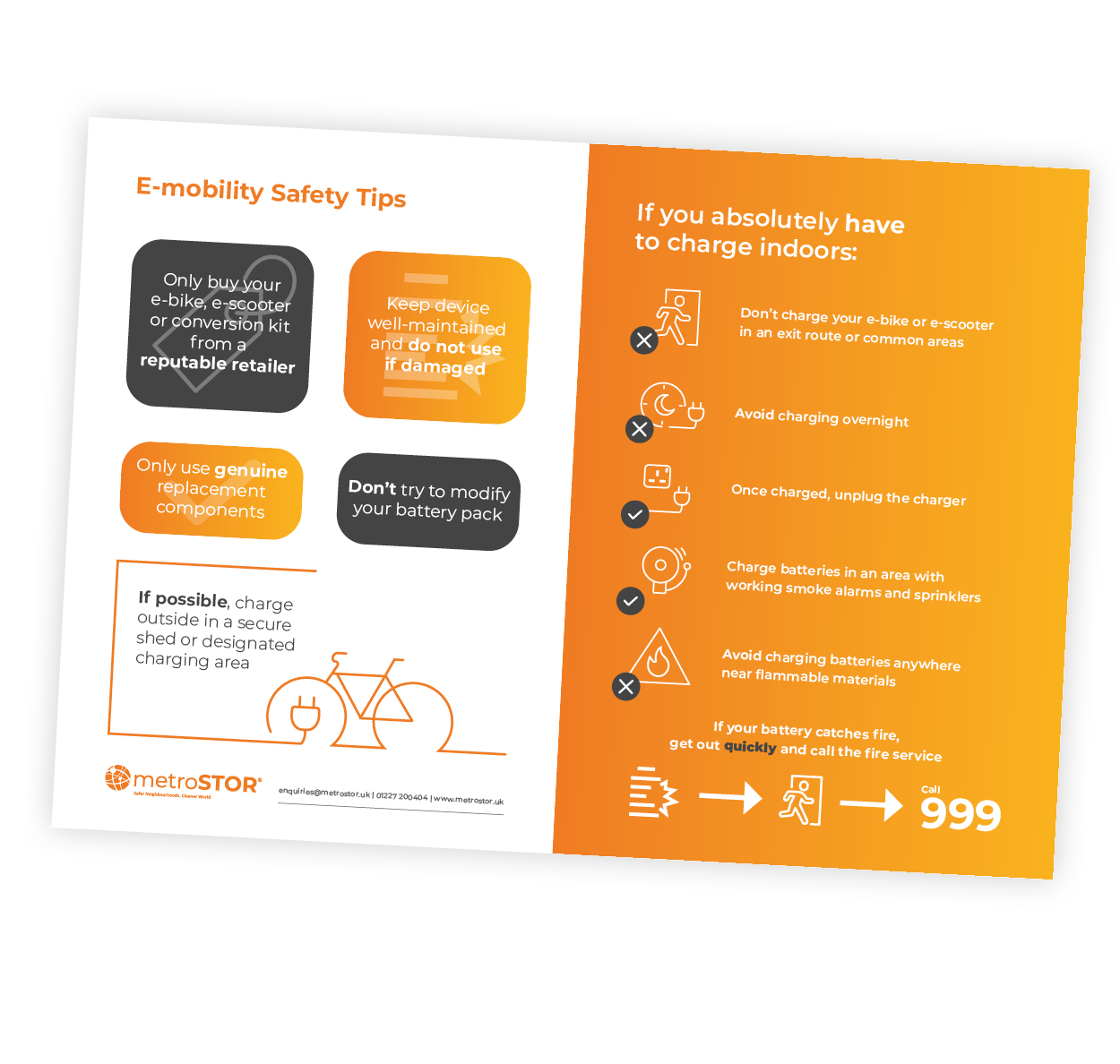The rising popularity of e-mobility devices in the UK has unfortunately coincided with a rise in fire safety concerns, with the shortcomings in safe storage provisions becoming apparent as most older buildings simply weren’t constructed with these modern devices in mind.
Across 2023, the London Fire Brigade (LFB) responded to more than 100 fire-incidents related to e-mobility devices. The main power component of e-mobility devices, lithium-ion batteries are highly sensitive products, and any neglect of optimum maintenance and storage conditions will only exacerbate fire safety concerns, and enable risks to personal and building safety.
While the best solution to help resolve the issues is the establishment of secure external storage and charging facilities, safe storage guidance can be readily applied by residents and landlords in order to help mitigate the fire risks involved.
Understanding the Risks for Building Management
Those involved in building management ultimately find themselves in a difficult situation with regard to e-mobility devices. While tenants may already be aware of safe storage practices and own a product from a reputable manufacturer, they simply cannot assume that risk for themselves.
Even smaller lithium-ion batteries have the potential to explode and burn intensely if they endure physical damage or become overcharged, a phenomenon referred to as ‘thermal runaway.’ The potential consequences of an incident occurring within any indoor environment are highly concerning, and it potentially subjects the whole building to the dangers.
The National Fire Chiefs Council (NFCC) provides their own fire safety and storage guidance for e-mobility devices, while landlords are also obligated under the Fire Safety Order to ensure that tenants in rented dwellings are not exposed to fire risks. Many have therefore felt encouraged to adopt NFCC guidance in light of this legal responsibility.
Safe Storage Guidance for E-mobility Devices
- Always follow the manufacturer’s instructions for the storage and maintenance of lithium-ion batteries. It’s highly recommended that batteries are removed from the respective e-mobility device when not in use.
- Avoid always storing or charging e-mobility devices around escape routes or in communal areas of a dwelling. In the event of a fire, this can significantly impact people’s ability to escape. For landlords, this should be considered in Personal Evacuation Plans.
- While internal storage of e-mobility devices should always be avoided, in communal and high-density settings, and in the absence of secure external facilities, this is often challenging to regulate altogether. Batteries should therefore be stored in a cool, dry environment away from any flammable materials, with working smoke and fire alarms installed.
- When storing the e-mobility device, check the condition of the battery for signs of improper function or damage, such as warped shaping. Never store an e-mobility device and leave the battery to charge unattended, as it should be monitored at all times during this process to ensure that precautionary action can be taken if the battery enters failure conditions.
Safe Storage Solutions for E-mobility Devices
NFCC guidance recommends that mobility scooters shouldn’t be stored within 6m of the respective building. While this can certainly be applied to other e-mobility devices like e-bikes and e-scooters, this can be difficult to enforce in high-density settings. In the event that it’s impossible to achieve this recommended safety distance, guidance suggests e-mobility devices be secured within a robust, weatherproof structure providing a minimum 30 minutes fire resistance.
Secure external facilities should be regarded as the primary solution for both short-term and long-term storage of e-mobility devices to ensure optimum safety for all residents, as well as the security of the devices themselves for users. These should be easily accessible and safe to use for all users, located as close to the building entrance as possible without compromising fire safety guidelines and provided with well-lit access paths.
metroSTOR has developed a range of secure external storage and charging facilities for e-mobility devices that are designed to be installed externally to ensure safe containment away from residential buildings, offering a fully enclosed unit to ensure complete weather protection for the devices stored inside.
From single locker format to communal hub buildings, the metroSTOR modular system accommodates the increasing demand for e-mobility devices by enabling additional capacity to be integrated in the event that further storage space is required. All units are customisable for fire-resistant enclosure specification to ensure effective, proven containment in the unfortunate event of a fire, as well as energy consumption metering, and access control.









